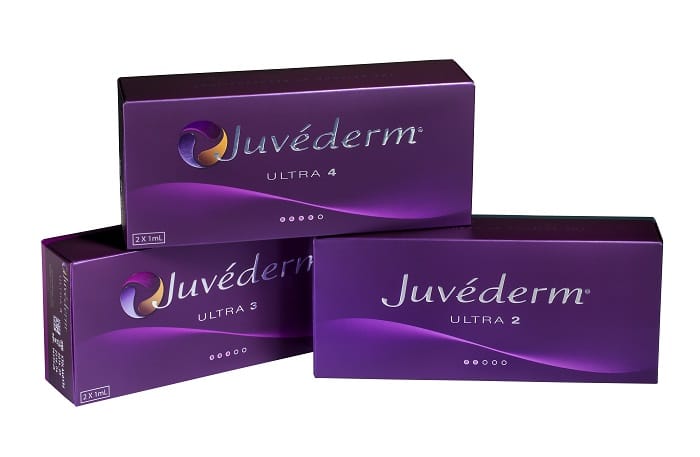SHARE THIS ARTICLE

General Public
Types of Juvederm Fillers and When To Use Them
Jun 20, 2018
What is Juvederm?
Juvederm is a brand of hyaluronic acid-based dermal fillers manufactured by Allergan. The Juvederm fillers can be categorised into 2 collections—Vycross™ and Ultra—which are differentiated by the type of technologies used to manufacture them. Vycross Technology is used to produce fillers with a combination of low molecular weight and high molecular weight hyaluronic acid. The resulting fillers are very cohesive and easily mould to correct numerous skin concerns for a natural appearance. There are also fewer incidences of post-injection swelling.
The fillers in this collection are:
- Juvederm Volite with Lidocaine
- Juvederm Volbella with Lidocaine
- Juvederm Volift with Lidocaine (also known as Volift Retouch)
- Juvederm Voluma with Lidocaine
The Ultra collection is manufactured using Hyalacross™ Technology, which creates a gel with an ultra-smooth consistency. When considering a dermal filler, amongst the most frequently chosen options is to buy juvederm wholesale from an online wholesaler like Maylips.
The dermal fillers in this line are:
- Ultra Smile
- Ultra 2 (also known as Ultra XC)
- Ultra 3 (also known as Ultra Plus XC)
- Ultra 4
Juvederm Ultra fillers are also integrated with lidocaine for more comfort during procedure. Patients looking for a treatment to revitalise exhausted and dehydrated skin can choose the Hydrate injectable. It is a biorejuvenating solution ideal for mesotherapy.
What is Juvederm used for?
These soft tissue fillers are indicated for correcting a variety of facial concerns. Medical practitioners should choose the appropriate filler based on the concentration of hyaluronic acid and degree of altering needed:
- Correcting fine lines like crow’s feet and skin inelasticity: use Juvederm Volbella or Volite.
- Augmenting lip shape and size: use Juvederm Volbella or Ultra Smile.
- Correcting moderate to deep-set lines like nasolabial folds: use Juvederm Volift, Ultra 2, or Ultra 3.
- Correcting hollowed out regions like cheeks and temples: use Juvederm Voluma or Ultra 4.
- Replenishing overall skin hydration and elasticity: use Juvederm Hydrate.
How to inject Juvederm
Injection depths and methods are dependent on the type of filler used and degree of skin condition severity:
- Volite with Lidocaine: inject into the dermis.
- Volbella with Lidocaine: inject into the superficial or mid-dermal layer. You may also inject into lip mucosa.
- Volift with Lidocaine: inject into the deep dermal layer.
- Voluma with Lidocaine: inject into the deep dermis or subcutaneous layer.
- Ultra Smile: inject into the mucosal or dermal layer of the lip.
- Ultra 2: inject into the mid-dermal layer.
- Ultra 3: inject into the mid to deep dermal layer.
- Ultra 4: inject into the deep dermal layer.
- Hydrate: inject into the superficial dermal layer.
Can I Do My Own Juvederm?
In theory you may be able to inject Juvederm yourself, but the risks are enormous. Most likely you are not a trained medical professional and therefore do not know the exact techniques to use or the location of blood vessels in your anatomy. A wrong injection can result in blocked blood vessels and loss of facial tissue, infection and other similar complications. In some countries injecting Juvederm or other dermal fillers without being a medical professional may even be illegal.
Side Effects
Patients may exhibit some reactions following injections such as:
- Mild pain
- Swelling
- Redness
- Infection, rare
- Allergic reactions, rare
Patients should recover from common reactions within a week. Patients should seek immediate treatment from the nearest hospital if they develop serious reactions.
*Disclaimer: Information on Maylips.com is provided for informational purposes only. Self-medication is strictly prohibited. All aesthetic procedures should be provided by the licensed healthcare specialist after the consultation with the personal therapist. The information in this article should not be used for prescribing any medication for the beauty injections.
All brand and medication descriptions in the article are based on the personal opinion and are not endorsed by Maylips.com. The article content was not reviewed for medical validity. Use this article for information and not for a final decision on the procedure.

